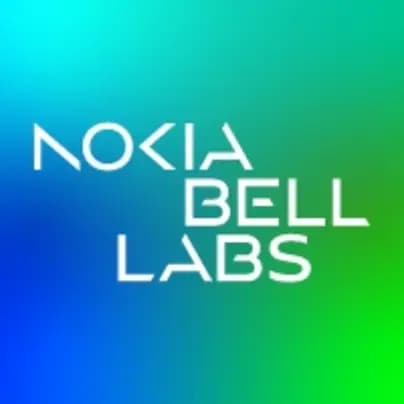5G Standards leadership – beyond the numbers

Blog from the Chairman of 3GPP RAN
We are in the midst of the first wave of wide commercial 5G deployments in all major regions, much ahead of what was thought imaginable even just a few years ago. All this has been made possible thanks to major acceleration in 5G standards development and the industry’s unanimous commitment to ensuring a single united ecosystem around global 3GPP 5G NR standards.
In the LTE era, we have grown accustomed to taking one single global standard for granted. But this was not always the case. Not so long ago, we could not take our phones across the Atlantic or to Asia: the ecosystem in the 1990s was fragmented across regions. The global unification of the cellular ecosystem is one of the great accomplishments of the technology industry, and 3GPP standards have been at the forefront of this endeavor. It is impossible to overestimate the socio-economic impact of all the positives this has brought to people’s lives. With 5G, this trend will reach new dimensions as the enterprise and vertical domains move towards capitalizing on the technology capabilities of 5G NR.
As obvious as this sounds, it is important to stress the criticality of maintaining a single united ecosystem going forward. Only under such conditions can a healthy competitive environment flourish. We need to maximize the economies of scale around 3GPP’s 5G radio and system standards, redefining all industries through a single platform for all connectivity applications.
We often hear and read about different aspects of how companies are thought to be leading the 5G charge. This is good, as it shows the high level of interest and importance 5G brings to economic and social development. But every week there are new claims about 5G leadership – both in deployment and in standards. Let us take a step back, rise above all the noise and try to understand what 5G standards leadership truly entails.
There are obvious metrics for gauging 5G standards leadership. One can draw wonderful charts, quote numbers and show trends from these: 3GPP contribution numbers, delegation sizes, feature rapporteurships, etc. All very easy to flash in boardroom meetings. These simple metrics are exactly what they are: simple. Nothing more. They are often misused and misconstrued either unwittingly or intentionally.
In reality, flooding 3GPP standards meetings with contributions is extremely counterproductive. The efficiency and success of the standards process is measured in output, not input. It is much more valuable to provide focused and well-scrutinized quality input, as this maximizes the chances of coming to high-quality technical agreements and results.
Similarly, pondering over delegation sizes and the number of rapporteurships does not yield a company leadership. Technical expertise comes with experience. As a chairman I would always seek advice from the most experienced expert irrespective of how many other colleagues they may have sitting in the same row for their company. A rapporteur is a person who willingly gives up their company’s representation for a certain feature in the interest of a greater good, facilitating technical progress as much as possible through skilled management and coordination of the work.
For obvious reasons, the primary goal of each member company in 3GPP is to ensure that the standards contain as many of their technical proposals as possible. This ensures that the value of their research is maximized. But this does not necessarily maximize the value of the standard itself. In fact, yet again, it is counterproductive. Often, the fallback compromise is to introduce new proposals into the standards through the creation of additional technical options, leading to specifications that include a variety of optional functionalities. The eventual implementation choices are thus becoming much more complex, and interoperability considerably harder to achieve.
High-quality research is absolutely key to technical progress. But so is the ability to let go of concepts in the interest of a single interoperable solution. The 5G vision is infinitely more ambitious than 4G’s was, namely to take cellular technology to all areas and forms of communication. The 5G pie will be orders of magnitude bigger – but only if we all contribute to creating a coherent recipe instead of adding in ingredients at random.
In my mind, true leadership comes from the mindset of at least partially sacrificing one’s own interests for the greater good: a highly interoperable world-class set of global specifications. Companies with long-term vested interests in a healthy global cellular ecosystem should be able to exhibit such an approach, stepping back from the techno-political hype of the day and really focusing on these key values.
In my 20 years in 3GPP, of which I have served more than 10 as Chairman, I have come across many different ways in which companies and their delegates have exhibited true leadership. One can show respect for the integrity of 3GPP specifications in a variety of ways, distancing oneself from the company position for a greater good:
- A senior delegate from Samsung taking the leadership on ironing out a compromise for 5G NR beam correspondence – a critical feature for higher 5G frequency bands
- Another delegate from NTT Docomo relentlessly driving agreements on device capabilities critical to the initial rollout of 5G
- An expert from Huawei pulling together all aspects of 3GPP’s 5G submission for ITU’s IMT-2020
- A seasoned Nokia delegate driving a compromise on some of the critical device power control functionalities
- A Qualcomm delegate calmly and effectively driving the technical resolution for including 5G-5G dual connectivity as a late feature into Release 15
- Award winning Ericsson delegate driving key compromises around several RAN architecture matters
All these are examples not explicitly visible through any simple stats or metrics. But in retrospect, they will prove to be much more valuable in a drive towards the realization of the 5G vision.
Written by Balazs Bertenyi
